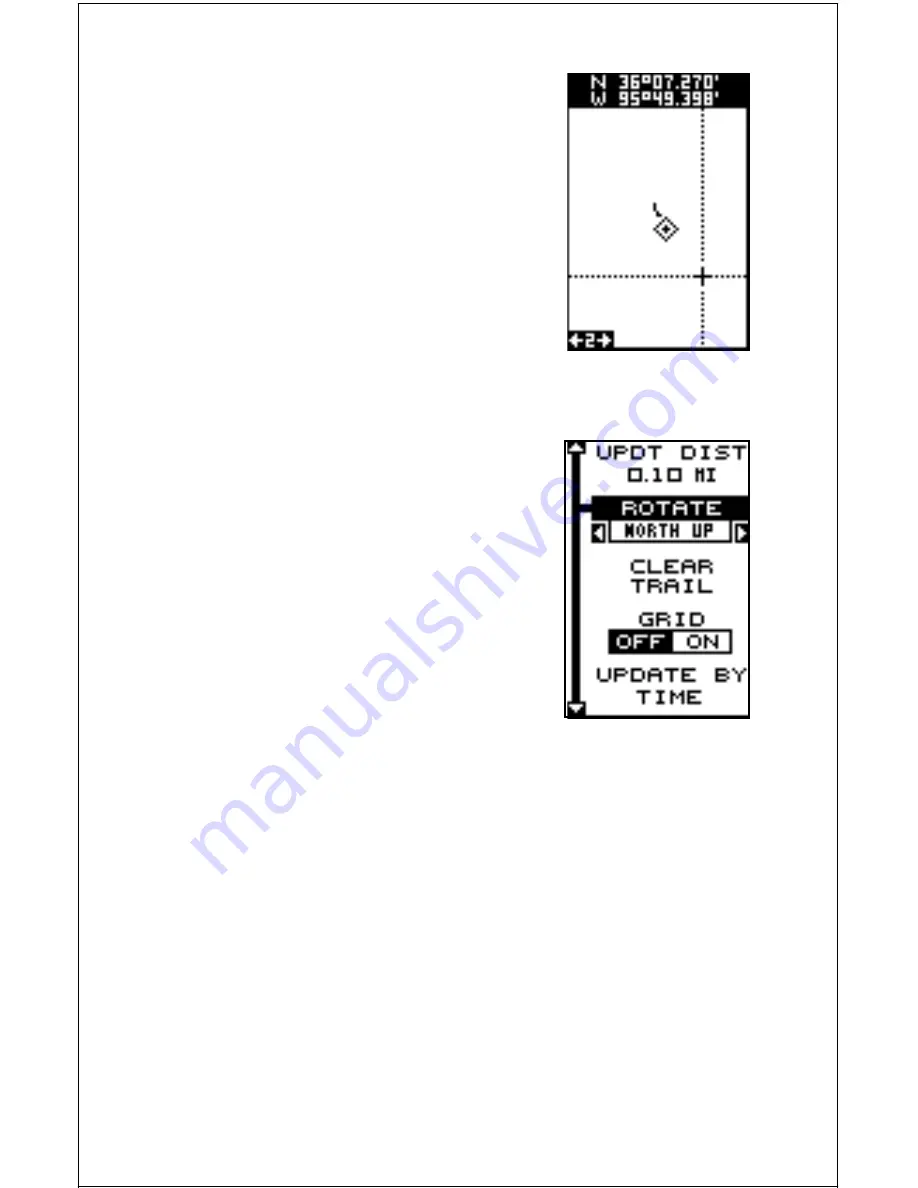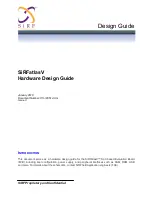
15
You can move the cursor around the display by
pressing the arrow keys in the direction you want
it to move. This lets you view different areas of
the plotter, away from your present position. When
it’s turned on, the zoom-in and zoom-out keys work
from the cursor’s position - not the present posi-
tion, so you can zoom in on any detail, anywhere
while navigating. The latitude/longitude of the cur-
sor shows in the box at the top of the plot-1 screen
whenever the cursor is activated. The cursor is
also used to place and erase icons and waypoints.
Press the EXIT key to erase the cursor.
PLOTTER OPTIONS
The Eagle Explorer lets you customize the plotter
using the “Plotter Options” menu. To use this menu,
first press the MENU key, then use the up or down
arrow keys to highlight the “Plotter Options” label.
Finally, press the right arrow key. The screen
shown at right appears.
Plotter Orientation
Normally, the Eagle Explorer shows the plotter
with north always at the top of the screen. This is
the way most maps and charts are printed on
paper. This is fine if you’re always travelling due
north. Waypoints you see to your left corresponds
to the left side of the plotter, to your right shows on the right side of the
plotter, and so on.
However, if you travel any other direction, the plotter doesn’t line up with
your view of the world.
To correct this problem, the Eagle Explorer has a track-up mode that
rotates the plotter as you turn. Thus, what you see on the left side of the
screen should always be to your left, and so on. It also has a course-up
mode that keeps the plotter at the same orientation as your initial bearing
to the waypoint.















































